 |
298M Sili Con
Cello Sax Module |
|
Don had come up with the idea of the Sili Con Cello (i.e. silicon cello) piece for his wife at the time, Ami Radunskaya, who is Ezra Buchla's mother. She was a cellist and mathematician that taught at Pomona College. Ami performed often with Don, originally with the Sili Con Cello system that Don had built for her, and later on using the Lightning radio batons. Don studied her specific phrasing and structure of her performance style and designed the Sili with this in mind, which could indicate a lot about the phrase counting and timings related to them. Because of the circumstances surrounding the creation of this module, one could consider this to be the most specific module ever created by Don (in terms of how it was to be utilized), even including the Ghost Box for Morton Subotnick.
The Sili Con Cello system was a late 1970s collection of modules including a 281 Quad Function Generator, 292C Quad Lowpass Gate, 266 Source of Uncertainty, 259 Complex Wave Generator, 270 Preamplifier, and a special module in the upper left of a 203-8 portable case with a 214 power supply. The original Sili Con Cello module is often erroneously referred to as the 299, because the circuit was breadboarded on the 299 Kluge Board that Don had designed to create and test module ideas out on.
This special circuit on this breadboard was the "brains" of the Sili. It consisted of the circuitry to generate envelopes from the microphone and interpret these envelopes using a phrase counter, timeout gates, and CV generator to drive the 5 synthesizer modules for the sound generation. The original Sili Con Cello is in the collection of the EMEAPP (Electronic Music Education and Preservation Project) in Philadelphia.
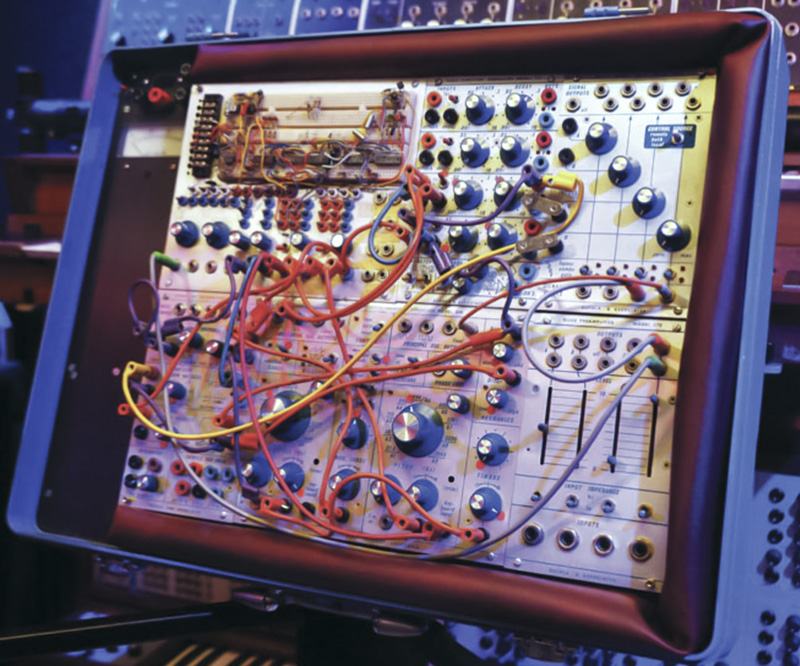
Photo courtesy of EMEAPP Philadelphia
Much later in 2002, David Kean commissioned Don to build three of the 298s, two for a performance created by Kean, and one for Don to keep as an engineering example in case repairs had to be made to the two that were in David's system. Don had refined the schematics he drew up in 1978/79 and made a much smaller version of the control module which he dubbed the 298 Sili Con Cellosax. It is only in passing that Don had mentioned to David during the design phase that the Sili was used with a saxophone.
After David had used the modules for his piece, he left the two 298s in his personal case. Don would often visit him at his home in Calgary, and patch up a duet for both Silis, which they dubbed the Sili Con Sili. It was a generative patch that would elicit a call and response between both 298s, which would play endlessly. These patches became a regular occurrence for impromptu listening parties between David and Don for many hours at a time.
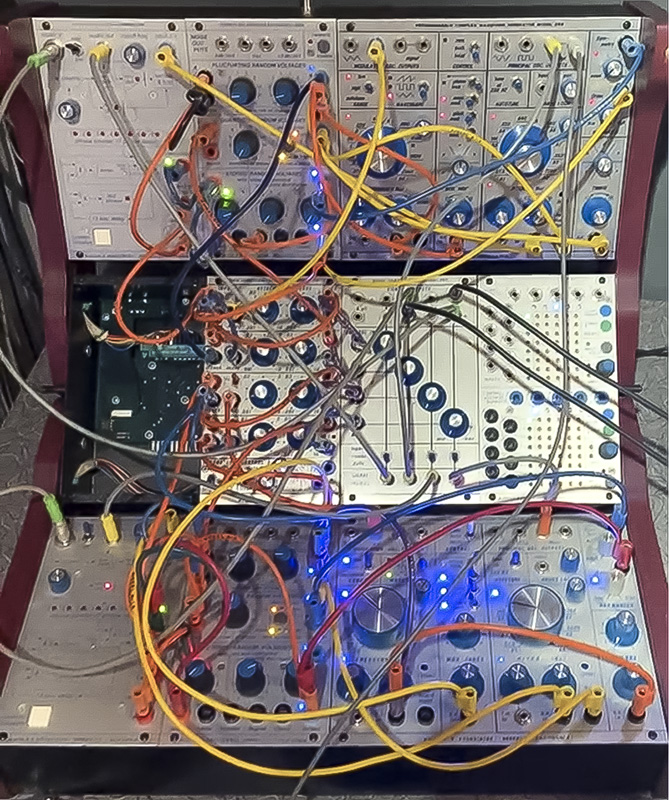
Photo from video courtesy of M.E.M.S.
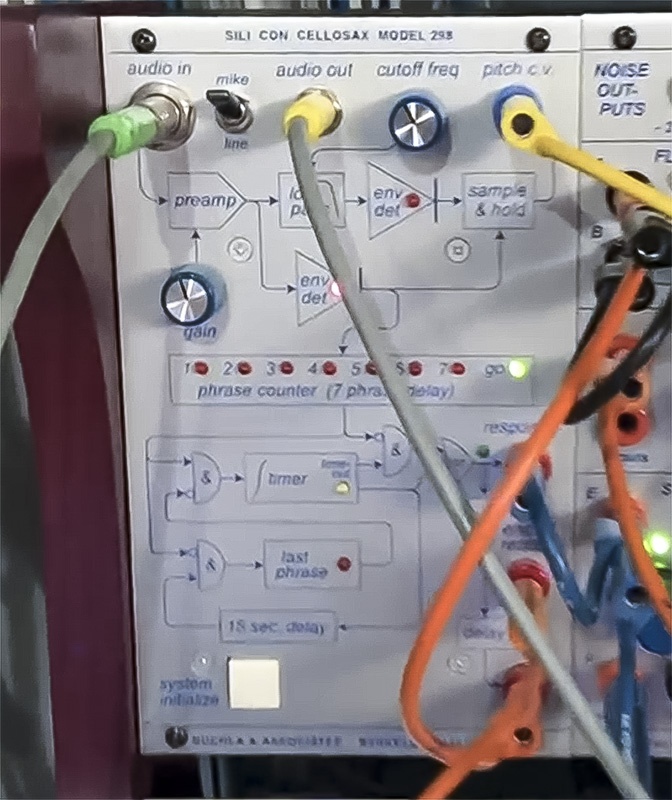
Photo from video courtesy of M.E.M.S.
During a recent visit to David's home, MEMS was given the opportunity to disassemble the 298 and build three prototypes for research purposes. David calls it "a one trick pony, that does a trick quite well". MEMS sent me their reproduction of this module which was very interesting as I didn't know the history or how it actually worked.
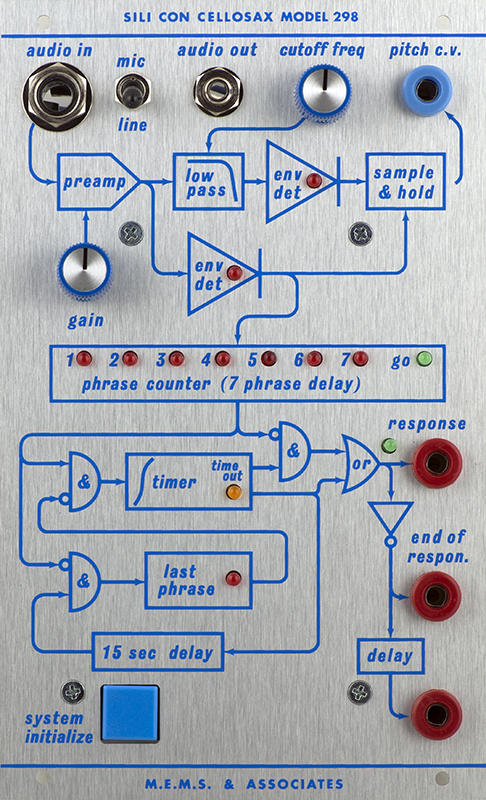
This module detects musical phrases defined as continuous sound followed by a short period of silence It starts by counting musical phrases 1 to 7. They are indicated by the appropriate LED at the end of the phrase. After the 8th phrase the Go LED indicates and the mode switches to generating a Response pulse, End of Response pulse, and a Delayed End of Response output.
If silence is detected in this mode for approximately 15 seconds the Time Out LED indicates as a warning that this could be the last phrase. If silence continues for approximately another 15 seconds the Last Phrase LED indicates and the Response outputs no longer function.
Any new phrase detected either during a Time Out or Last Phrase reinitiates the Go mode where the cycle repeats. A System Initialize is required to restart the Phrase Counter.
This module was not used by itself but as part of a larger patch as show in this drawing.
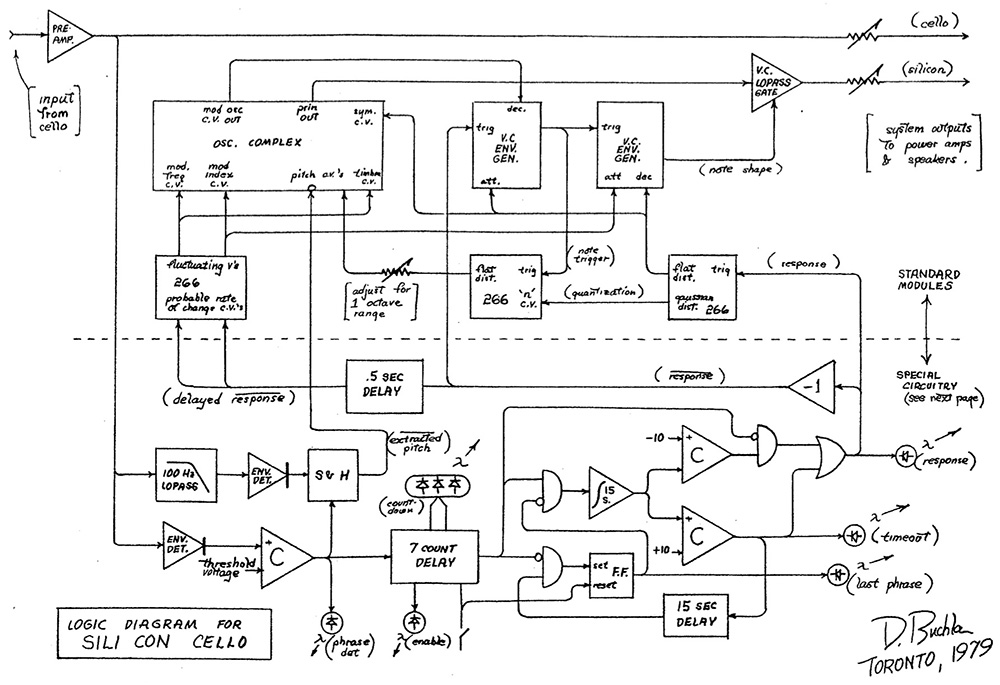
This description comes from from the score of Sili Con Cello written by Don in 1979.
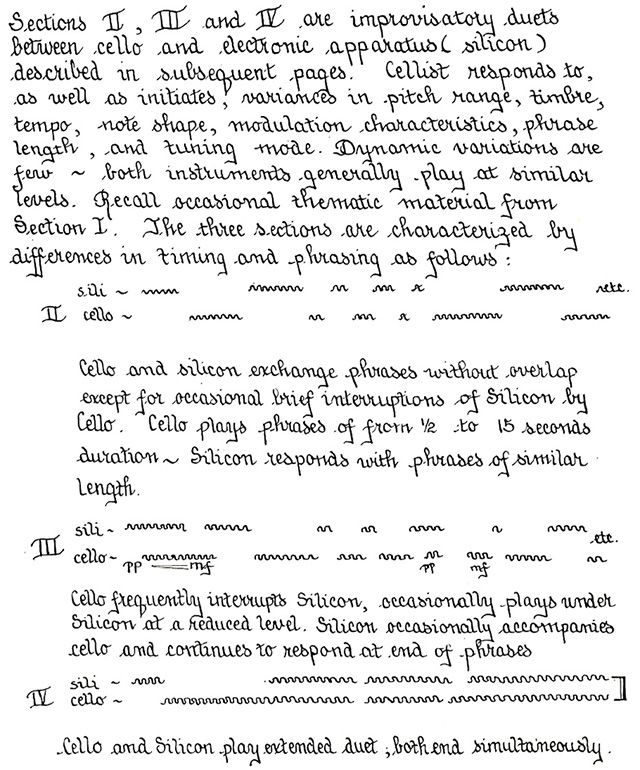
Operation
I didn't have the right instruments on my bench to put this module through it's paces so used my 208. I setup a sequence of 5 frequencies - 120 Hz, 100 Hz, 80 Hz, 60 Hz, and 40 Hz. I used the envelope generator and gate1 to generate a short phrase of sound and the pulse generator to drive the sequence.
The CV output works in reverse where a higher frequency generates a lower CV. The CV is not scaled but derived from the envelope detector. Careful adjustment of the Gain and Cutoff frequency can generate a fairly good range of voltage from the input frequencies. This scope image shows the sound sequence and the resulting CVs. They are sampled after the phrase by about 250 mS.
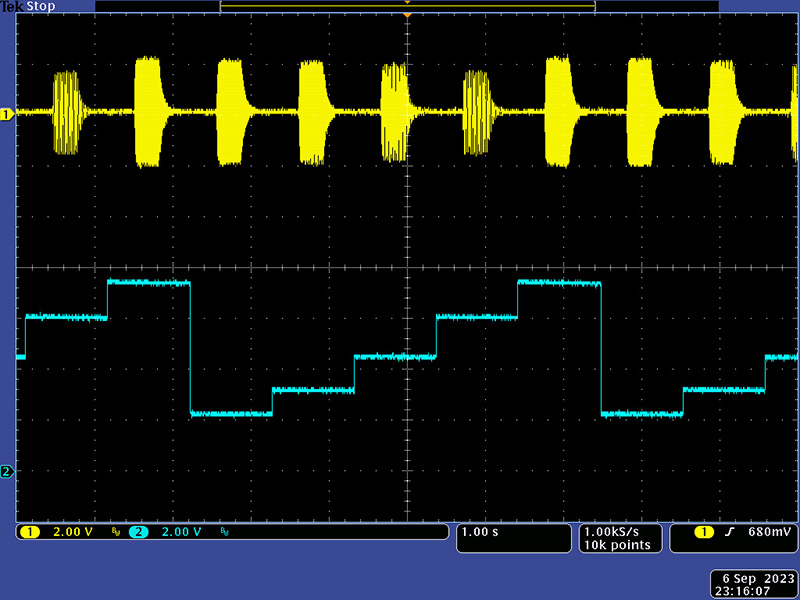
This scope image shows the Response outputs. The cyan is the phrase Response gate and the falling edge coincides with the sample and hold for the CV. Magenta is the End of Response gate which is just the inverted Response output. Green is the Delayed End of Response output which is simply the End of Response gate with rising edge slew and lower amplitude.
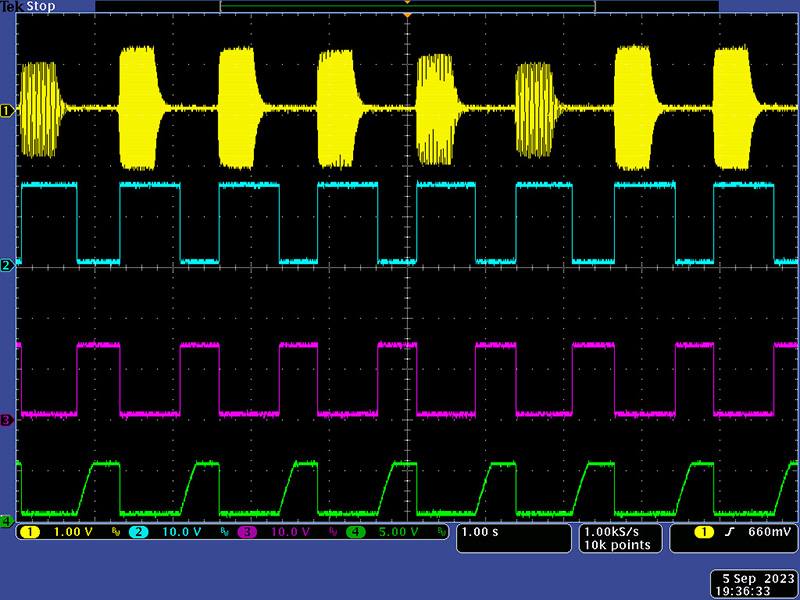
I did not install this in my system and try a patch with the 5 modules. Besides, I don't play cello or sax!